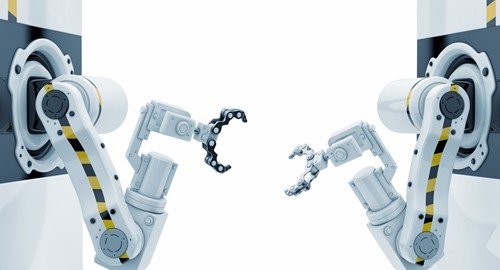
Robots in the warehouse aren't exactly a science fiction dream. Automation technologies that have enabled specialized robots to perform key functions in the warehouse have been around for a while, but they have mostly been expensive and difficult enough to use that they were reserved for only the most advanced facilities. Those days are starting to recede, however, as the Internet of Things movement combines with advances in artificial intelligence and machine learning to make robots more accessible and useful than ever.
Robots advancing
The rise of the IoT has led to an increased use of connected devices across a wide range of warehouse operations, allowing organizations to coordinate and track data in diverse ways. This data can then be sent to applications that intelligently enact processes based on programmed logic. If those apps reside in a drone or similar robot, the opportunity for considerable advances could be significant.
Warehouse operators seem aware of this potential. A MarketsandMarkets study found that the warehouse robotics market will expand at a compound annual growth rate of 11.8 percent from 2017 through 222. Demand for high levels of quality, reliability and responsiveness to e-commerce industry needs are fueling investments in robotics.
Don't expect a robot invasion
While robots have the potential to streamline and automate many aspects of warehouse and logistics management, they come with some caveats. These include issues such as safety, for example, as few robots can operate near humans without creating too much risk. What would happen if a drone mistakenly identifies somebody's hair for a package? These kinds of errors present too much risk, especially when combined with cost and complexity considerations, to bring an invasion of robots to a warehouse near you. However, advances in robotics capabilities and strategic use of robots in applicable settings can allow for significant innovation.
Moving toward a robotics future
Getting robots to work well with humans is critical moving ahead, and a report from New Electronics highlights one project that aims to solve just this problem. The initiative is working to improve how robots identify objects and grasp them to ensure robotic limbs only apply appropriate force to whatever they are interacting with.
This type of innovation could allow robots to not only interact with humans or work near them with greater safety, it could also enable robots to grasp boxes, packaging materials and other assets with greater precision.
Data at center of robotics innovation
All of these improvements to the robots themselves is moot if organizations are unable to get robots the information they need to work effectively. Warehouse management software systems play a critical role in this process. Whether your warehouse is still highly dependent on humans or whether you have a more diverse vision in mind, a WMS platform can provide the data visibility you need to get ahead.
